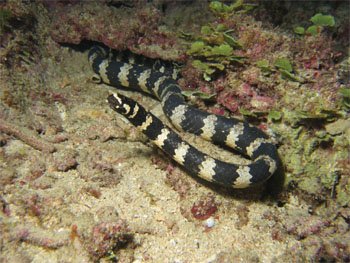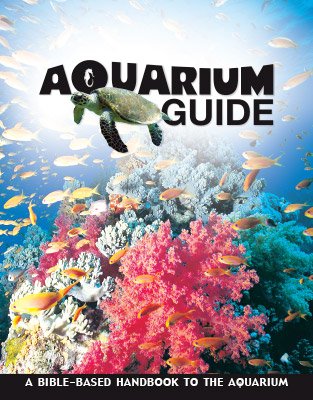Sea Snake
Claire Goiran, CC BY 3.0, via Wikimedia Commons
The sea snake is an air-breathing reptile and must come to the surface to breathe.
Design

The sea snake is an air-breathing reptile and must come to the surface to breathe. However, it can spend from 30 minutes to two hours diving between breaths. How does it do this? It has one long cylindrical lung that extends almost the entire length of its body. This is very efficient. It is also able to carry out cutaneous respiration. Oxygen diffuses from sea water across the snake’s skin into tiny blood vessels and carbon dioxide diffuses out.
Features
- The sea snake has a paddle-shaped tail that helps it move through the water.
- Its nostrils and glands are on the top of its snout to allow it to breathe easier as it swims through the water.
Fun Facts
- The sea snake has nostril valves that prevent air from entering the lung while it is underwater.
- Sea snakes are confined to tropical waters and all species are venomous. The venom is composed of neurotoxins and myotoxins. Unlike many land snakes, though, sea snakes are not inclined to bite humans.
- Most cases of humans being bitten involve fishermen bitten when sorting through their catch in fish nets.
CLASS: Reptilia (reptiles)
ORDER: Squamata (amphisbaenians, lizards, and snakes)
FAMILY: Hydrophiidae (sea snakes)
GENUS/SPECIES: About 52 species
Size: From 20 in (50 cm) to 7 ft (2.1 m)
Diet: Fish, fish eggs, and eels
Habitat: Throughout the Pacific and Indian Oceans; some around the
coasts of Central and South America
Aquarium Guide
With fun facts about more than 100 animals, this long-awaited Aquarium Guide includes beautiful pictures and reveals the incredible facts and design features that point to our amazing Creator. This handy size guide is excellent for school field trips and family trips to your favorite aquarium!
Browse Kids Book- © 2024 Answers in Genesis
- Privacy Policy
- Contact
- About

